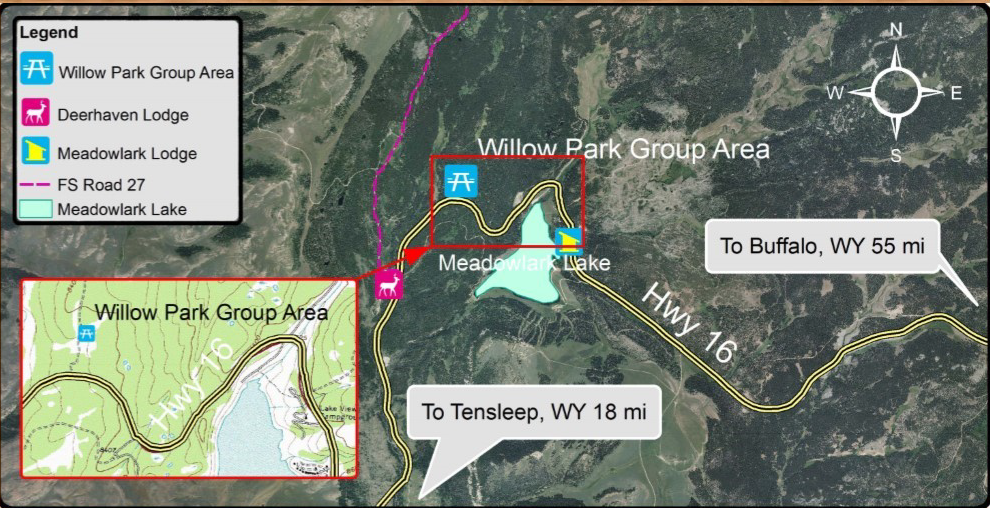
Do you need a burn pile? As promised last week, here are some tips for safe hand piling and burning.
Piling and burning is a simple and cost effective method of disposing of woody debris in rural areas. One key to efficient burning is how well the slash is piled. Below are some suggestions on how to pile slash so you will get a good hot fire that makes burning easy. They also apply to piling with tractors.
Location
Provide plenty of space between piles and structures and/or trees that you do not want damaged. Radiant heat from burning piles can damage or even ignite improvements and scorch trees. Rising heat can scorch overhanging branches.
Consider reusing good pile locations year after year. Burning piles may sterilize the soil, and encourage growth of noxious weeds. By reusing the same pile locations year to year the effect on the soil will be confined to fewer locations.
The best time to burn piles is during the winter when there is a snow cover that is likely to stay on the ground for an extended period. Be sure to locate your burn piles you can find them easily in the snow.
Construction
Proper pile construction is essential for efficient burning. Improperly constructed piles can be very difficult to light and may require a lot of handwork to restack and nurse along to get all materials to burn. Well-constructed piles that burn hot and efficiently will also produce significantly less smoke than piles that burn slow. You can place cardboard sheets within the pile to one corner drier to aid in ignition.
Assure a good burn by following these suggestions:
- Make your piles compact: Compactness is the single, most important factor affecting ignitability and flammability. Dense fuel concentrations contribute to easier and more robust fire growth. Compact piles shed moisture and allow heat to build up, ensuring that the whole pile is consumed. Loosely stacked piles allow snow and moisture to penetrate the pile, and will not hold sufficient heat for ignition and sustained fuel consumption.
- Stack piles high. Three to five feet is a good height for hand piles. Three feet is a minimum. It is better to combine piles to make them five to six feet in diameter and four to five feet high, rather than to have a lot of small two to three foot piles.
- Trim long stems and limbs that protrude from the pile, adding the material to the top of the pile. Remember—compact!
- In open areas, you can construct piles with much larger dimensions where trees or structures will not be threatened. Compactness remains the key characteristic for effectiveness.
Some Effective Methods for Hand Piling
 Cross Hatching. This provides an increasingly tight cap and a dry base with each successive layer. Best built with straighter material. Enhance flammability by adding layers of finer material such as pine boughs.
Cross Hatching. This provides an increasingly tight cap and a dry base with each successive layer. Best built with straighter material. Enhance flammability by adding layers of finer material such as pine boughs.
 Haystack. Piles like this are a natural result with brushy, limby material including shrubs and conifer bows. Limbs from deciduous trees may be difficult to pile tightly unless they are cut into small pieces that will make a compact pile. Large amounts of conifer limbs/needles provide a good cap to shed snow and rain.
Haystack. Piles like this are a natural result with brushy, limby material including shrubs and conifer bows. Limbs from deciduous trees may be difficult to pile tightly unless they are cut into small pieces that will make a compact pile. Large amounts of conifer limbs/needles provide a good cap to shed snow and rain.
 Tepee Piles. These are easy to build and burn well once a fire is established. However, they are not inherently compact and can be difficult to ignite. This technique would be best used where you can build a good compact center/base first using the haystack or cross hatch method then add uniform stems to finish off the tepee.
Tepee Piles. These are easy to build and burn well once a fire is established. However, they are not inherently compact and can be difficult to ignite. This technique would be best used where you can build a good compact center/base first using the haystack or cross hatch method then add uniform stems to finish off the tepee.
Other reminders:
Always heed any current open burning restrictions. These are typically in effect during dry times from late spring to fall.
Always inform your County Fire Dispatch office when you are planning to burn your piles.



